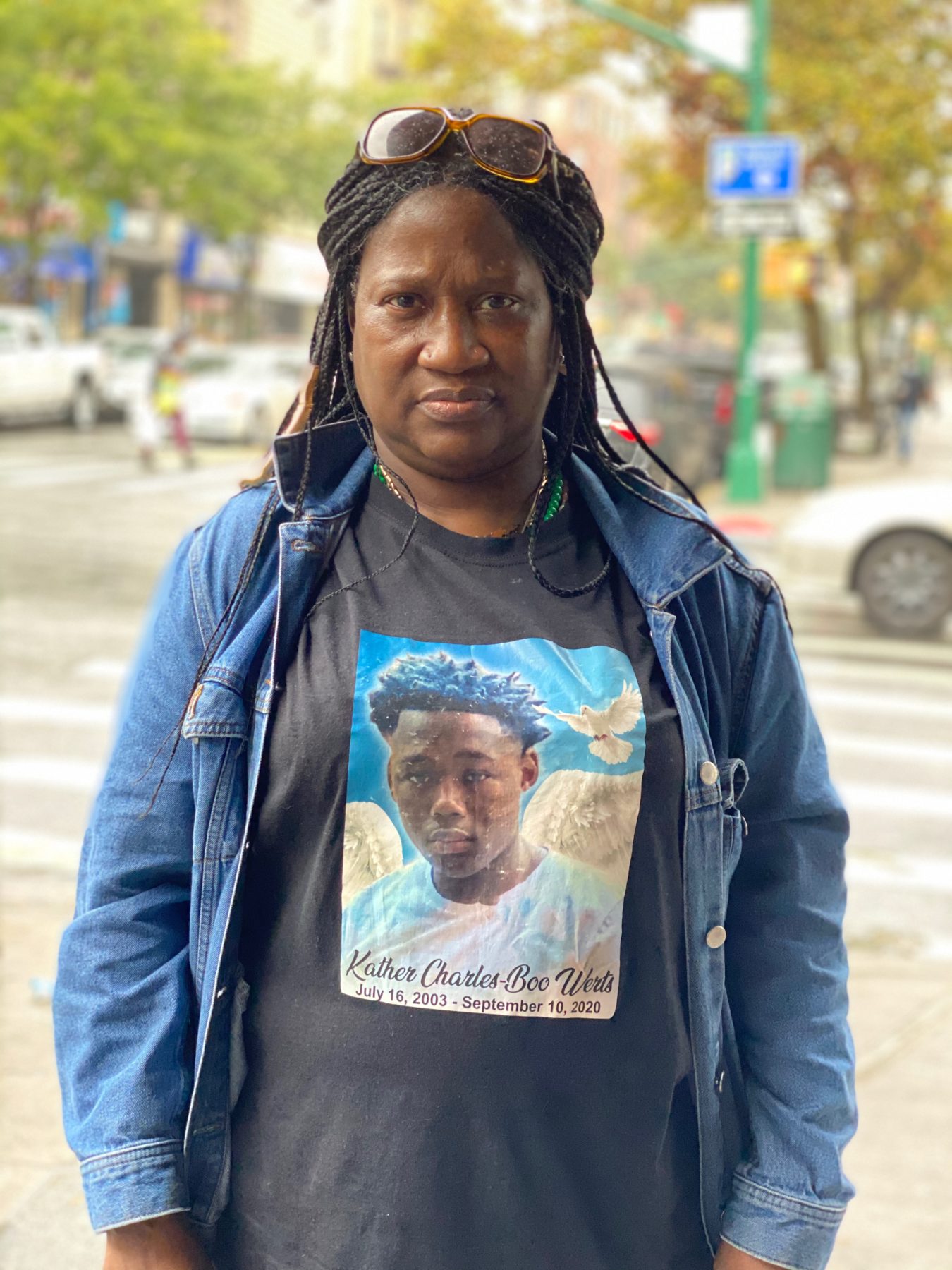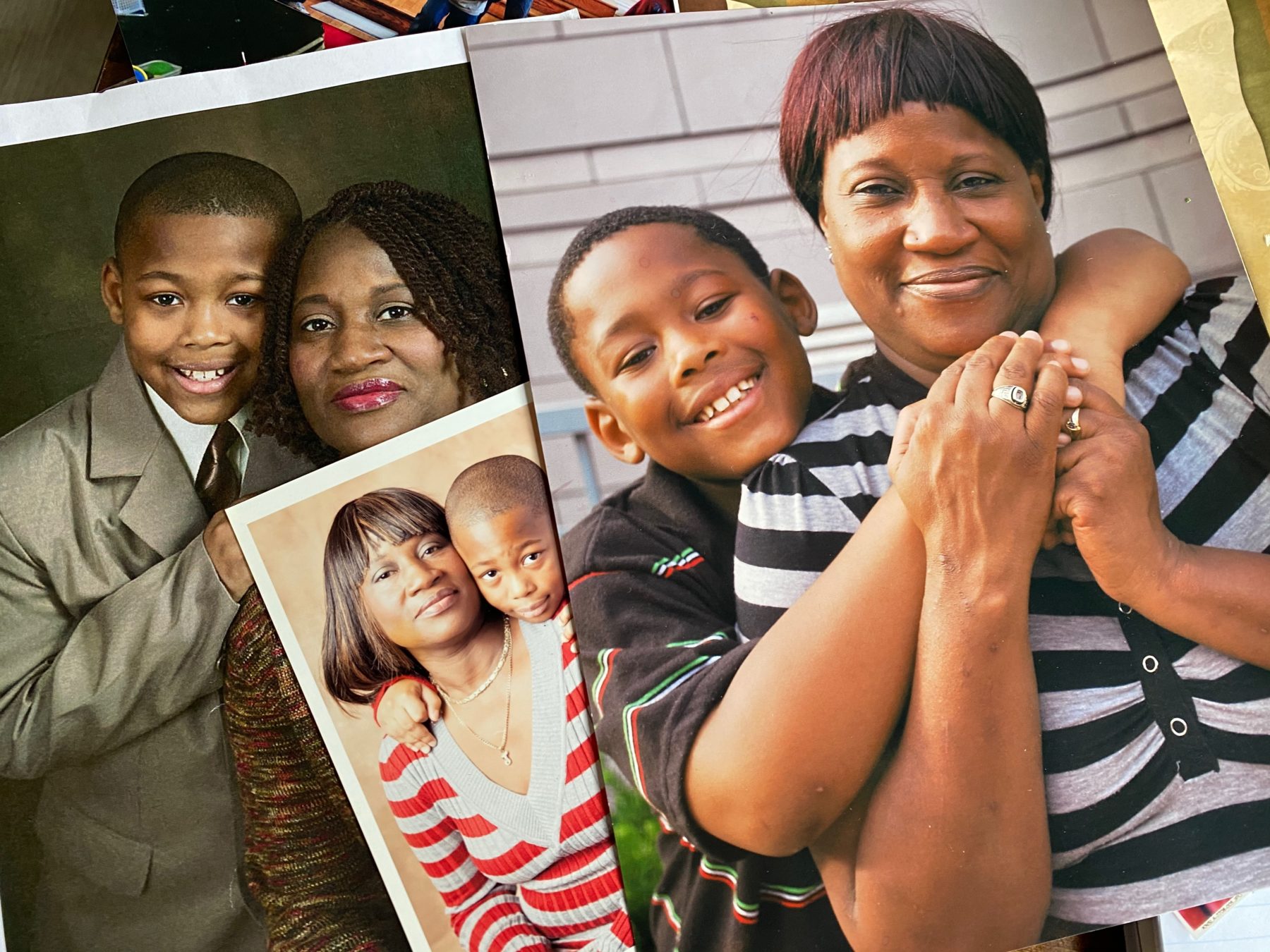The killer stepped between tightly parked cars and crossed in front of a Jesus Loves You sign to the teenager standing in front of 1705 Hoe Ave. in the Bronx.
Jeanette Spruell Werts replays the surveillance video, released by the NYPD, over and over again, looking for clues into her son’s murder. And each time she presses the play button, two men dressed in black pants, hooded sweatshirts and white masks appear, one stepping away as the killer runs onto the sidewalk in grainy slow motion.
Kather Werts, 17, shot in the foot, crawls away. His executioner stands over him, points his gun and fires again, hitting once in the head.
Spruell Werts, 55, rushed to St. Barnabas Hospital after detectives called. But her son was gone already, another killing on the streets of the Bronx.
His assassin was filmed calmly walking on Southern Boulevard not long after the murder.

“It’s the hardest news to deliver,” said Ernest Morales III, a former commanding officer of the 42nd Precinct
But to Morales, such deaths are often predictable, long before a trigger is pulled.
Kather is one of 12 people murdered this year in the 42nd Precinct in the southwest Bronx, and one of 373 murder victims in New York City – a rise of 33.2% from the same period in 2019.
The senior at East Bronx Academy was killed around 4:45 p.m. on Sept. 10.Wesley Torres, 19, was arrested and charged with murder a month later. A second man is still wanted.
Kather lived on Hoffman Street, two miles from where his street name, KDubb, is memorialized in marker on fencing and utility boxes. He and his mother moved there in March after she grew fearful of nightly gunfire on Hoe Avenue.
He loved video games and chess and poured ketchup on everything. His favorite color was red.
“He was a good person,” his mother said. He enjoyed basketball, especially Los Angeles Lakers star LeBron James. When he played games with the family, she recalled, he would play to win, and “he would make up his own rules.”
She imitated her son’s boisterous laugh, and described him as someone who would help a classmate or help her with tasks around the house.
Sarah Scrogin, 46, principal at East Bronx Academy, said Kather was “trying really hard to make it to graduation. When he had trouble with online schooling, he called me on my cell phone. He advocated for himself even in the middle of a pandemic.”
His mother said, “Him not walking down the aisle to graduate hurts me to my soul. He was on his way. I have no diploma from him, and there will be no grandkids.”
Madison Torres, 16, a close friend and schoolmate, recalled him as a “good, loving fun person. We always used to chill out there [in] the building where he was killed. I could not believe it happened to him.”
Kather did not have weapons, except for a kitchen knife his mother said he sometimes carried after he was stabbed three years ago
He was raised by his father’s mother after Spruell Werts lost custody of her children when he was 3 months old.
The family reunited when Kather was 7, but three years later, Spruell Werts fell behind on rent, and they were evicted from their apartment. She and her son lived in a family shelter until he was 14, while her older children moved out on their own. By 2015, she and Kather were gaining a foothold and had moved to Hoe Avenue, where her son would lose his life.
But when Kather turned 14, he became difficult to manage, his mother said.
He was jumped by six teens and stabbed in the stomach, and his mood changed. Spruell Werts took him to counseling, volunteered with the PTA to be involved with his schooling and enrolled him at the local Boys & Girls Club.
Still, the downward spiral continued. Kather smoked marijuana, was arrested for carrying a knife and slid into silence.
“He became more withdrawn and had an attitude,” his mother said. “He was depressed. He tried to find a way to cope.”
On Labor Day, he returned home with a black eye and bruises. His friends, she said, told her that he fell.
“Nobody spoke,” Spruell Werts said. “There were only rumors. No one was arrested.”

(Photos courtesy of Jeanette Spruell Werts)
Morales, the former police officer, described gangs casting a cloud over the area. “These crews …. fight back and forth and they encroach in other neighborhoods,” he said. “There are street fights and knife fights that lead to shootings.”
But her son, Spruell Werts said, was not part of a gang. “He was not a violent person.” Others in the neighborhood agreed. “He was a good boy, but there’s drugs, guns and chaos out here,” said Kareame Holmes, 44, a frequent visitor to the block.
“At 174th Street and Hoe, if you’re from the block and you know people and you drift out of your safe zone, you may not make it out,” Morales said. “There isn’t much a mother can do. It’s difficult to keep a teenager inside.”
Hours before his death, Spruell Werts said, her son received a call on his cell phone that prompted his return to the old neighborhood. She doesn’t know the details of the conversation.
They said goodbye as they always did.
“I love you and God bless,” his mother said. “And he always said, ‘I love you back.’”
He took the bus to Hoe Avenue to meet his friends. That is where his killer met him.
The arrest of Torres does not bring Spruell Werts closure.
“What did my son do?” she asked. “I always told him the streets were bad. … But what did he do?”
About the author(s)
Arlene Schulman is a journalist based in New York City. Her work takes many forms, from reporting to feature writing, photography, podcasting and filmmaking. She was born in the Bronx and raised in Brooklyn, and lives in a rent-stabilized apartment in upper Manhattan where she writes from her kitchen table. Arlene is interested in covering issues and people pertaining to public housing, disabilities, aging, Latin music, bridge engineering and immigration. She is focused on documentary filmmaking at Columbia Journalism School. Connect with Arlene on Twitter @ArleneSchulman, Instagram @ArlenesBodega or email arleneschulman1@gmail.com



